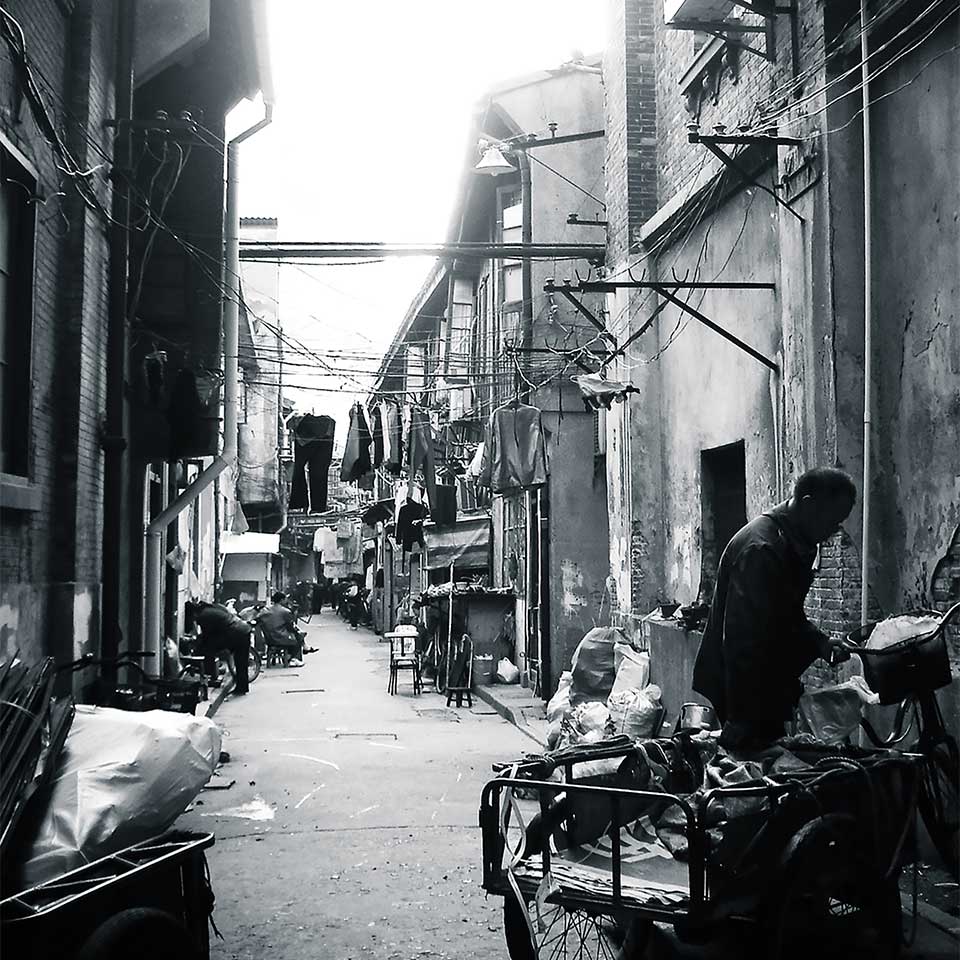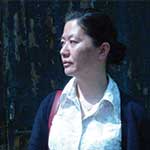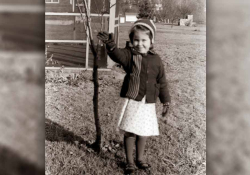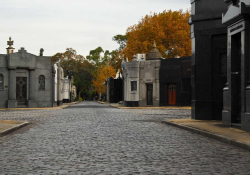Crossed Paths

Wang Anyi traces Shanghai in map and memory as she revisits its lanes, a mental flâneur.
For almost the entire decade of the 1990s, I was deeply depressed. My mother was ill and was in and out of the hospital every year. Her room was on an upper floor of a newly built hospital, and it would be safe to say this was the tallest point in the vicinity. There was a window at the end of the corridor. Looking out from it, you could see the unbroken expanse of roof tiles of old-fashioned longtangs,* while little black dots swooped and soared in the rays of the setting sun—flocks of pigeons returning to their roosts. I spent a lot of time in front of that window, sometimes with my mother, sometimes in solitude. I felt wounded at heart, by whom I didn’t know, but my pain was clearly being inflicted by some limitless and irresistible force. These interludes were a silent communion that brought me a sense of peace. That’s the city I live in: covered over by my life, so that no matter how much distance I put between us, even if I’m looking down from the highest point, all that’s visible to me is my own heart. The city’s bright and shiny surface has always given off a whiff of cloying vulgarity, not to mention a sort of anomie. It has always been tainted by life.
The shape of the city in my mind’s eye is always a little vague. I actually know my way better around cities where I’ve stayed only briefly, cities where I don’t even speak the language, than I know this one. There are many streets whose orientations and intersections I still don’t have a clear picture of. Not that I’m afraid of getting lost—I usually manage to find the place I’m going to. But the opposite can happen as well. Sometimes, despite my best efforts, I never reach the street I’m looking for; I just go round and round in circles, only to end up right back where I started.
That’s the city I live in: covered over by my life, so that no matter how much distance I put between us, even if I’m looking down from the highest point, all that’s visible to me is my own heart.
When I was old enough to run around on my own with my playmates, we roamed all over, but I have no recollection of how we got where we were going, or how we made our way home. What I do remember is that as I got closer to home, the evening lights would be coming on, and my stomach would be rumbling, and when I turned onto my lane, I could hear the sizzle of hot oil in the wok just inside the back door to my house. My heart would be filled with complex feelings—a mixture of utter exhaustion and profound calm and order. I was entering a new stage of development, an unstable time of surging hormones and sullen moods. On one occasion, our group of girls went to an unfamiliar neighborhood, and for no reason whatsoever, one girl became an object of disgust for the rest of us, and we decided to leave her behind. We walked away quickly, turning several corners, until we could neither see her nor be seen by her. With nonchalant cruelty, each of us returned to our own home. At school the next day, we played it cool when she furtively related what had happened to her. After losing track of us, she’d sat down by the road. She didn’t know how long she’d been sitting there when somebody spoke to her. He asked how she’d gotten there, and she couldn’t answer; he had her go with him, and he brought her home—the man was a co-worker of her father’s. This strange incident frightened us, not because we believed she’d been in any real danger but because there was something darkly menacing about the dusky streets, about her losing both her way and her memory, and about the sudden appearance of the stranger. This was one aspect of life, the obscure, behind-the-scenes events that add to the store of experiences we accrue over time.
℘
To this day I’ve never lived anywhere for as many years as I lived in the house where I grew up, in that longtang neighborhood in the center of the city. For as long as I could remember, one of the walls had been torn down to connect our lane to an adjacent one, which was in turn connected to various other lanes; and lying somewhere in the midst of this network of interlocking lanes was my elementary school. There’s no way I could draw an accurate map of any of this, despite the fact that, as I said, I can tell you the precise position, compass orientation, and related transportation grid of places where I’ve spent only a few days. Even now, I have yet to form a clear picture of the layout of those interconnected longtangs, or of how they were linked. Pushing open the back gate of one of the courtyards of our elementary school, we would be greeted by the peace and tranquility of a cobblestone alley. An air of loneliness hung over it, and yet this space was a necessary and integral part of my growing up. The entire process of our development was oddly and inextricably bound to the architecture of the place where we lived. It’s a state of mind, “a back lane” state of mind, you might say. You could get to the rear door of my house by way of this little lane, and that leg of the journey home was a solitary one.
Looking at myself across the distance of the intervening years, all I can see is a tiny insect moving around a crisscrossing grid of brick and cement streets and alleys; I bump around blindly, and it makes my heart race.
When I think about it now, I can’t figure out how, in a longtang neighborhood so jam-packed with people, where schoolchildren careened all over, that little segment of alleyway so rarely saw any passersby. One side of the alley was lined with a row of classroom windows, and the voices of children reading aloud rang out brightly in this space. Should someone happen to walk by, their footsteps striking the cobblestones would echo sharply. When I try to connect this to the layout of specific houses and buildings, it gets even more complicated; I know each one so well that they’ve become one big jumble. Looking at myself across the distance of the intervening years, all I can see is a tiny insect moving around a crisscrossing grid of brick and cement streets and alleys; I bump around blindly, and it makes my heart race.
℘
This isn’t to say that the city didn’t also have spaces that were illuminated. It did, of course, and the evening lights had even more elegance than the sunshine. But the light they shed was in the end insubstantial; the moment it solidified, it became “grime.”
I never could unravel the complex relationships among various neighbors. There was a restaurant called the Renaissance Western Cuisine Cooperative—supposedly known in the old days simply as the Renaissance. In the summertime they opened up the back courtyard for outdoor dining. This courtyard was in actuality just an open plot that extended to a distant back wall beyond the reach of lamplight and obscured by shadows, which gave it an air of mystery. One summer evening, my family had gone to have dinner there. The days were long, and it wasn’t yet completely dark out. Suddenly, from the direction of the vacant patch, someone yelled something from a row of windows—they were shouting my older sister’s name. One of her classmates lived there. The girl was leading her little brothers and sisters in calling my sister’s name over and over; their voices were both excited and mocking. At first my sister laughed, but as it went on she became increasingly uncomfortable, until finally she burst into tears. What circuitous path had brought this outdoor dining area to a spot right under my sister’s classmate’s window? That was a mystery I couldn’t solve, no matter how hard I tried. I knew that the classmate’s house was on a wide and noisy longtang; but it also happened to look out over this midsummer outdoor restaurant, where trees hung with strings of little electric lights encircled tables topped with white tablecloths and flickering candles.
The complex layout of blocks and lanes lent itself to a great many chance encounters, so that two people—or maybe even three or four—who had been total strangers would wind up crossing paths; and once they’d met, they became like family. For example, one day my cousin took me to a friend’s house. This friend, who lived downstairs from another one of my cousins, had another friend who turned out to be a student at my school. On the other hand, you could also find instances where the situation was reversed. There were people who walked up and down the same lanes that I did every day, but decades went by before we met. In the dense honeycomb of the neighborhood buildings, it was impossible to say how many people you knew or didn’t know might be living nearby—you never knew when Fate would bring you together. We came and went, moving through the channels that threaded through these nests, until our own amazing stories began, and without realizing it, we had stepped into the prime of youth.
℘
In that intricate network of alleyways and houses where you could never really be alone, chance encounters and near misses occurred with equal frequency. I always had the sense that, running inside those hard cement husks, there were mysterious pathways, hidden itineraries that determined who would end up walking with whom. Today, new-style buildings and roadways have been built on the site of that long-since demolished neighborhood, and the city has grown into a shape that is remote from the one we experienced.
One day, I accidentally wandered into an old longtang. Squeezed into a narrow crack between glass-walled skyscrapers, it was nothing but a vestigial segment. I looked around in a daze—I had no idea where I was, and I had to ask directions from an elderly man who just happened to be walking by. He’d been lost in thought, and when I called out to him, he jumped: “You scared the wits out of me!” He spoke with the same local accent I’d been surrounded by growing up—genuine Shanghainese, with his hun sounding like huo, so he gave me a bit of a surprise as well. The various sounds and scents of the lane welled up from the pavement and enfolded me, hot tears filled my eyes, and the obscure pathway that had been hidden deep beneath the surface sparkled for a moment in the blazing sun, before it once again sank back into the broken tiles of a dilapidated garden wall. Memories of experiences that were attached to physical things beckoned like objects in a lost and found, but only for an instant; for immediately afterward, with another sweep of the hand, they abandoned me.
The day I left home as a young woman, I went to the freight-train depot on the edge of town. There was no platform. The ties and coarse gravel beneath them lay in plain view, black rails meandered into the far distance, and heaven and earth seemed infinitely high and wide. Those who had come to see us off stood beside the wheels of the carriages and reached up through the windows, just barely able to grasp the hands of those who were leaving. At that moment, the town suddenly seemed bold and fierce as it threw off its old habits, leapt out of its old rut, and assumed a new form. When the train sped forward, the city revealed its whole face. It seemed entirely possible that there was nothing standing between the spot where we had lived, off the beaten track, filled with nooks and crannies, and the wider world. I opened my eyes wide and saw that this city was just a little courtyard, overgrown with foxtails and plantagos, a tiny and desolate patch—and yet to me it seemed vast and teeming with life. An oleander extended its flowering twigs over the wall, and green loquats fell from a neighbor’s tree—this was my season of blossoming and harvesting. Pill bugs and earthworms multiplied in the poor, thin soil of this garden. Bounded by walls on four sides, this spot also provided space for human activity, a place for me to grow, until one day I discovered that it had become the ruins of an illusion.
Translation from the Chinese
By Andrea Lingenfelter
[*] The longtang (or lilong), often translated as “lane,” is a distinctive local feature of Shanghai’s urban layout; what hutongs are to Beijing, longtangs are to Shanghai. The customs and culture of Shanghai’s longtangs, along with their unique history, are defining features of Shanghai that are central to much of Wang Anyi’s work.













